Are you investing toward your retirement (or plan to soon)? If so, you can thank Vanguard for how inexpensive doing that has become—even if you don’t invest in a Vanguard account or own any Vanguard funds.
Vanguard is responsible for creating the index fund—a product that didn’t just bring down expenses in-house, but triggered a decades-long fee war that drove costs lower across the industry and around the world.
Today, Vanguard remains one of the investing world’s low-cost leaders. As such, it offers some of the most popular retirement-focused funds, of both the index and actively managed variety. And many of these funds are right at home in an individual retirement account (IRA).
Let me introduce you to a handful of these IRA-ready funds—each of which is inexpensive, effective, and helps meet a common long-term investing objective. These funds also make sense for many tax-advantaged plans, so you can consider holding them not just in IRAs, but also HSAs or (when available) 401(k)s.
Disclaimer: This article does not constitute individualized investment advice. These securities appear for your consideration and not as personalized investment recommendations. Act at your own discretion.
Editor’s Note: Tabular data presented in this article are up-to-date as of Feb. 14, 2025.
Featured Financial Products
Table of Contents
What Should You Want in a Retirement Fund?

When investing your retirement savings, you need to consider a few critical factors:
— Diversification: A robust retirement portfolio should hold multiple asset classes. This typically means stocks and bonds, though it can also mean alternatives such as real estate or commodities. Diversifying your retirement portfolio across these assets can help defray your risk and smooth your returns.
— Costs: Every dollar spent on fees and expenses is a dollar no longer available to grow and compound over time, so keeping expenses cut to the bone is vital. No worries in that department: The best Vanguard retirement funds’ fees typically sit near or at the bottom of their category.
— Taxes: A taxable account, such as a standard brokerage account, is better suited to take advantage of certain tax-advantaged investments, such as municipal bonds. For tax-advantaged accounts, such as IRAs, some of the best investments include bond funds (where the interest income won’t be taxed) and actively managed stock funds (where the capital gains distributions from heavy trading won’t be taxed).
— Income: You ideally want your retirement portfolio to produce regular income—in the form of both bond interest and dividend income. Stock prices can suffer during nasty corrections and bear markets, but income-generating funds can help provide for your living expenses without forcing you to sell at an inopportune time.
What Types of Funds Are Available in IRAs?

You can think of an IRA as a tax-advantaged brokerage account, insofar as they’re typically self-directed and extremely flexible. In most IRAs, you can own just about any type of fund—mutual funds, exchange-traded funds (ETFs), and even closed-end funds (CEFs).
ETFs typically beat both mutual funds and CEFs on fees, sometimes by a considerable margin. But there are a few reasons to consider Vanguard mutual funds in an IRA.
They’re cheap, for one. Vanguard mutual funds typically offer very low fees—in many cases lower than even many ETFs with a similar strategy.
Also, many of Vanguard’s mutual funds are actively managed, which as I mentioned above is more efficiently held within an IRA. And you very well might prefer to have a human manager overseeing certain strategies rather than buy a fund that simply follows an index.
Why Vanguard?
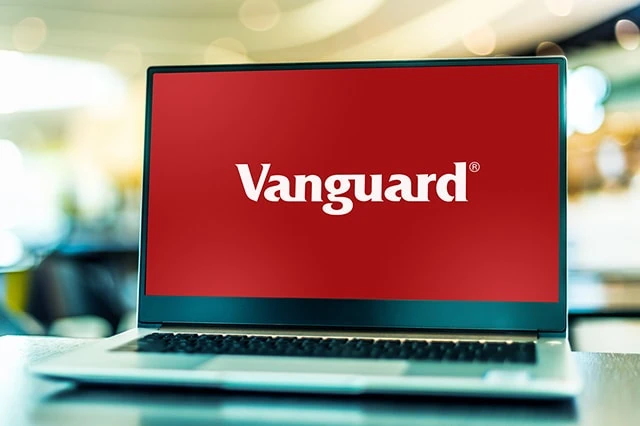
Vanguard Group is a massive firm that, as it points out itself, “is owned by its funds, which in turn are owned by Vanguard’s fund shareholders.” Its sheer scale—$8.7 trillion in assets—and alignment with shareholders’ interests allow it to charge a laughably low 0.08% expense ratio (a mere 80¢ for every $1,000 invested) on average across 400-plus Vanguard mutual funds and Vanguard ETFs.
The average asset-weighted expense ratio for U.S. mutual funds and ETFs is more than five times that, at 0.44%.
So even when a Vanguard fund isn’t the absolute cheapest in its category, it’s still going to be one of your most cost-efficient options.
Vanguard funds really started and continue to accelerate the trend of fee compression. But it’s not only the best Vanguard retirement funds that benefit. We all collectively pay less in fees and expenses and enjoy better returns because of the index revolution started and led by Vanguard’s founder Jack Bogle.
Importantly, though, it’s not just about low fees. Vanguard also grew into the powerhouse mutual fund company it is today by taking care of its clients and genuinely looking after their interests.
The Best Vanguard Retirement Funds for an IRA in 2025
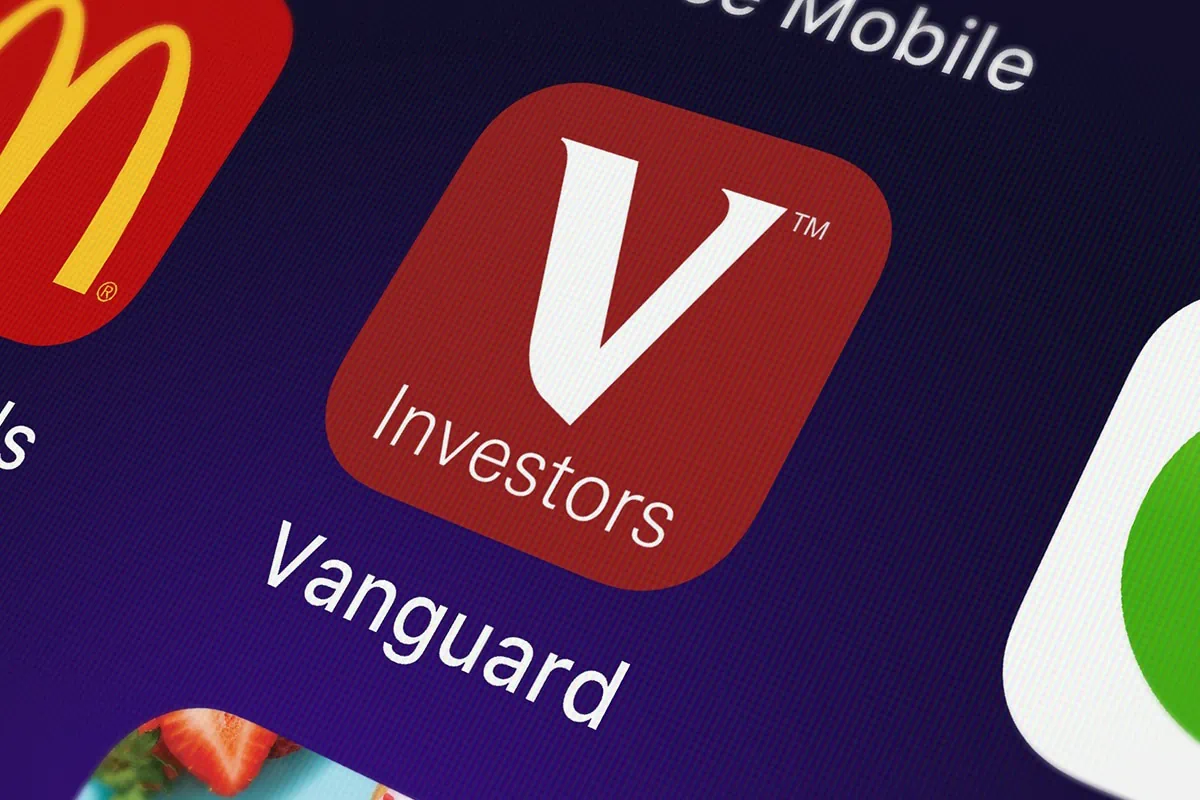
These Vanguard retirement funds are ordered by their Morningstar Portfolio Risk Score for the trailing 10-year period. Here are the risk levels each score range represents:
— 0-23: Conservative
— 24-47: Moderate
— 48-78: Aggressive
— 79-99: Very aggressive
— 100+: Extreme
Importantly, these scores are a general gauge of risk compared to all other investments. For example, a bond fund with a score of 20 might be considered a conservative strategy overall, but it could simultaneously be riskier than a number of other bond funds.
Lastly, these funds have a required minimum initial investment of $3,000 unless otherwise indicated. In other words, if you want to invest in these funds via an IRA, you’ll need to be able to purchase at least $3,000 worth of shares up front. Once invested, you can spend as much or as little as your IRA provider allows on subsequent purchases.
With that out of the way, let’s dig into some of the best Vanguard retirement funds to hold in a 401(k) that you might want to dive into this year.
1. Vanguard Short-Term Treasury Index Fund Admiral Shares
— Style: Short-term U.S. Treasury bond
— Management: Index
— Assets under management: $25.7 billion*
— SEC yield: 4.3%**
— Expense ratio: 0.06%, or 60¢ per year for every $1,000 invested
— Morningstar Portfolio Risk Score: 6 (Conservative)
No retirement asset allocation is complete without bond funds. As an asset class, bond funds play an important role in lowering volatility and providing regular income. However, bond interest is taxable at less favorable (read: ordinary) rates—if you’re in the 37% tax bracket, then you’re losing 37% of your bond interest to taxes—and because interest is the predominant source of returns on bonds, bond funds are best held in tax-advantaged accounts such as IRAs.
While the yield curve is no longer inverted (inversion is when short-term rates are higher than long-term rates), short-term bonds still offer relatively high yields for relatively low risk. Thus, it makes sense to keep a decent chunk of your overall bond exposure in short-term bond funds, such as the Vanguard Short-Term Treasury Index Fund Admiral Shares (VSBSX).
Related: 5 Best Vanguard Retirement Funds [Start Saving in 2025]
VSBSX tracks the Bloomberg US Treasury 1-3 Year Bond Index—a collection of roughly 100 federal bond issues with maturities of between one and three years. U.S. Treasuries are among the best-rated bonds on the planet, meaning that the major credit-rating agencies believe bonds issued by our federal government are likelier than most to repay you fully with interest. These bonds are considered all the more secure given their short maturities—at most, these bonds will mature in just three years, which is a relatively small time for the security of those bonds to change.
One of the most critical metrics to consider when considering bond funds is duration, which is a measure of interest-rate sensitivity. As an example, a bond with a duration of two years would see its price rise by 2% if interest rates fell by 1 percentage point (or conversely, would see its price fall by 2% if interest rates rose by 1 percentage point). The actual calculation of duration is fairly complex; it’s the weighted average of the bond’s cash flows. But the key takeaway is that, all else equal, the longer a bond’s time to maturity, the higher its duration—and thus the higher the interest-rate risk.
VSBSX has a duration of just 1.9 years, which is exceedingly low. And in return, you currently receive a yield of more than 4%. That makes Vanguard Short-Term Treasury Index Fund one of the very best Vanguard IRA funds for its low risk and competitive yield.
* Many Vanguard funds have multiple share classes, including ETFs. Listed net assets for Vanguard funds in this story refer to assets under management across all of a given fund’s share classes.
** SEC yield reflects the interest earned across the most recent 30-day period. This is a standard measure for funds holding bonds and preferred stocks.
Do you want to get serious about saving and planning for retirement? Sign up for Retire With Riley, Young and the Invested’s free retirement planning newsletter.
2. Vanguard Total Bond Market Index Fund Admiral Shares
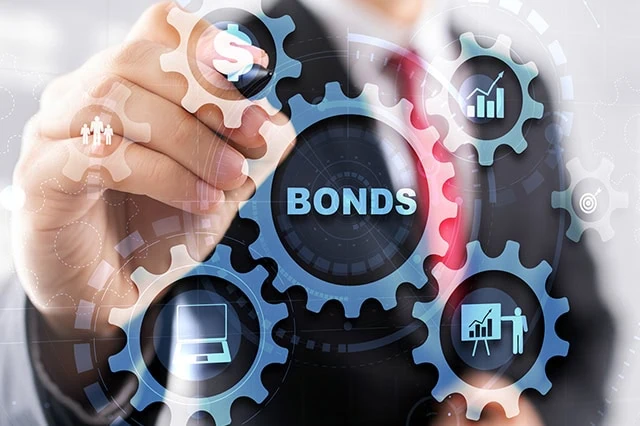
— Style: Intermediate-term core bond
— Management: Index
— Assets under management: $344.9 billion
— SEC yield: 4.6%
— Expense ratio: 0.04%, or 40¢ per year for every $1,000 invested
— Morningstar Portfolio Risk Score: 20 (Conservative)
Bond funds play an important role in lowering volatility and providing regular income, though they don’t need to be as conservative as the aforementioned VSBSX.
Related: 5 Best Vanguard Dividend Funds [Low-Cost Income]
Within the world of Vanguard bond funds, the Vanguard Total Bond Market Index Fund Admiral Shares (VBTLX) stands out as one of the very best Vanguard retirement funds for its combination of high-quality holdings, competitive yield, and rock-bottom fees and expenses.
VBTLX provides broad exposure to a wide universe of bonds. A little less than half of its portfolio is Treasury or agency debt backed by the U.S. government, and another 20% is invested in government mortgage-backed securities (MBSes). Industrial-sector corporate bonds make up a little over 15%, banks and financial institutions make up 9%, and the rest is spread across foreign bonds, utilities, and commercial mortgage-backed securities (CMBSes).
Related: The 7 Best Dividend ETFs [Get Income + Diversify]
Risk is higher than Vanguard’s short-term Treasury fund for a number of reasons. For one, roughly a third of VBTLX’s bonds aren’t government- or agency-related—they’re corporates and other issues with ratings that, while high, are lower than U.S. Treasury debt. Time remaining on these bonds is longer, too, with an average effective maturity of more than eight years. As a result, duration is higher—at six years, a percentage-point increase in rates would theoretically send the fund 6% lower.
On the flip side, you’re rewarded with a higher yield and more potential upside should rates go lower.
And with an expense ratio of just 0.04%, Vanguard Total Bond Market Index Funds is all but free to own.
Related: 13 Dividend Kings for Royally Resilient Income
Featured Financial Products
3. Vanguard Wellesley Income Fund Investor Shares

— Style: Moderately conservative allocation
— Management: Active
— Assets under management: $49.3 billion
— SEC yield: 4.0%*
— Expense ratio: 0.23%, or $2.30 per year for every $1,000 invested
— Morningstar Portfolio Risk Score: 28 (Moderate)
If you want both stocks and bonds in your portfolio, you have three choices:
1. Buy individual stocks and/or bonds.
2. Buy stock funds and bond funds.
3. Buy an “allocation” fund.
I affectionately refer to allocation (also “balanced”) funds as “portfolios in a can.” That’s because, if you so desired, you could literally invest in that single fund and have an entire portfolio of stocks and bonds. That’s not to say investors necessarily should do this, but they certainly can.
Still, if you find one of these funds that has an excellent track record and savvy management, they can be useful for allocating certain portions of your nest egg—like, say, the money in your HSA.
Enter Vanguard Wellesley Income Fund Investor Shares (VWINX), a “moderately conservative” allocation fund that’s much more defensively positioned. Here, bonds make up more than 60% of the portfolio. VWINX holds well more than 1,200 different debt issues—primarily corporate debt, but also Treasury and agency bonds, and even sprinklings of foreign bonds and MBSes. The remaining equity portion is spread across roughly 75 stocks or so, with a distinct value tilt and with a little exposure to developed international markets.
And per that track record and well-regarded management? Well, VWINX has both.
“The two lead managers [Matthew Hand and Loren Moran] avoid making large shifts between stocks or bonds; instead, they’ve kept the equity allocation within a 4-percentage-point range over their shared tenure,” says Morningstar analyst Stephen Margaria. “Keeping the stock/bond split relatively steady means the team’s strength of security selection, rather than asset-allocation decisions, will be the primary driver of returns, which should benefit long-term shareholders.”
From a tax perspective, Wellesley generates a lot of interest income and has high turnover of almost 60%, which means, on average, 60% of the portfolio changes every year—meaning capital gains distributions are in play. That means VWINX is best held in a tax-advantaged retirement account.
* SEC yield is used instead of dividend yield here because of the fund’s bond-heavy allocation.
Related: 7 Best Fidelity ETFs for 2025 [Invest Tactically]
4. Vanguard Wellington Fund Investor Shares

— Style: Moderate allocation
— Management: Active
— Assets under management: $114.0 billion
— Dividend yield: 2.1%
— Expense ratio: 0.26%, or $2.60 per year for every $1,000 invested
— Morningstar Portfolio Risk Score: 46 (Moderate)
If you like the idea of a “portfolio in a can” but would prefer a higher stock-to-bond ratio, you’ll want to look to Vanguard’s oldest mutual fund, Vanguard Wellington Fund Investor Shares (VWELX).
Vanguard Wellington, which came to life in 1929, is a moderate allocation fund that invests roughly two-thirds of its assets in stocks, and the other third in bonds. The stock portion of the portfolio currently holds about 70 predominantly large-cap stocks with a median market cap of over $250 billion—a “who’s who” of mega-cap blue-chip firms such as Apple (AAPL) and Microsoft (MSFT), with a little exposure to international names such as Unilever (UL) and AstraZeneca (AZN).
Related: 7 High-Quality, High-Yield Dividend Stocks
The bond portfolio is much more broadly diversified, at nearly 1,400 investment-grade issues. The majority of that (roughly two-thirds) is invested in corporate bonds, with another 22% in Treasuries and agency bonds, and the rest peppered across mortgage-backed securities (MBSes), foreign sovereign bonds, and other debt.
Turnover is on the elevated side, with about 40% of the portfolio turning over every year, so VWELX generates some capital gains distributions. It also produces a decent chunk of interest income from its bond portfolio. An IRA can help you avoid both sets of tax consequences.
Vanguard Wellington, as the name suggests, is managed by Wellington Management, an investment management company with nearly a century of operational experience. And this one-stop shop for your large-cap stock and bond needs charges just 0.26% in annual fees—very inexpensive for the skilled management and strong performance track record you’re getting in return.
Just make sure you’re considering your own investment needs. If you don’t want a third of your portfolio to be in bonds, you’ll want to put additional money into individual stocks, equity funds, and/or alternative investments.
Related: The 7 Best Dividend ETFs [Get Income + Diversify]
5. Vanguard Global Minimum Volatility Fund Investor Shares

— Style: Global large-cap stock
— Management: Index
— Assets under management: $2.1 billion
— Dividend yield: 1.8%
— Expense ratio: 0.21%, or $2.10 per year for every $1,000 invested
— Morningstar Portfolio Risk Score: 58 (Aggressive)
Vanguard Global Minimum Volatility Fund Investor Shares (VMVFX) checks off a lot of boxes. It invests in U.S. stocks. It invests in international stocks. It provides an above-average level of yield. And it’s designed to reduce volatility.
If you want to diversify your portfolio to also hold non-U.S. stocks, you’ll need a quick terminology lesson. An “international” fund invests only in companies outside the U.S., while a “global” fund invests in both U.S. and international companies. VMVFX is the latter.
Related: The 7 Best Mutual Funds for Beginners
Like many global funds, Vanguard Global Minimum Volatility dedicates the largest chunk of its assets to the U.S., which sits around 60% of the portfolio right now. The rest of its assets are spread across 23 other countries, including the U.K. (6%), Canada (5%), India (5%), and Taiwan (4%). In general, this roughly 240-stock portfolio is chock-full of dividend-paying large caps that power a nearly 2% fund yield—not massive, but certainly more than you’re getting out of America’s blue-chip S&P 500 Index.
Managers John Ameriks and Scott Rodemer have built this portfolio to deliver less volatility than your average global equity fund. They use a rules-based strategy that’s similar to what an index would provide, but they’re not forced to rebalance the portfolio on a set schedule, and they also use contracts to hedge against currency risk.
Related: The 7 Best Vanguard Index Funds for Beginners
Low- and minimum-volatility strategies are generally a trade-off: You sacrifice some upside potential in bull markets to get portfolio protection when markets decline. And in VMVFX’s case, the downside protection is quite good. According to Morningstar Analyst Ryan Jackson, “Investors shouldn’t expect this fund to keep pace when the market rallies or excel every time it wobbles, but its risk-adjusted returns should stack up well in the long run.”
Also note that VMVFX has a fair bit of turnover, at about 35%, so it’s turning over roughly a third of its portfolio every year. As a result, the fund can and does make capital gains distributions, making this a fine fit for a tax-advantaged account like an IRA.
6. Vanguard Target Retirement Funds

— Style: Target-date
— Management: Active
— Expense ratio: 0.08%, or 80¢ per year for every $1,000 invested
— Morningstar Portfolio Risk Score: 20-60 (Conservative to Aggressive)
One of the challenges in retirement planning is getting the asset allocation right, or having an asset class mix that is appropriate for an investor at your age and stage of life. An ideal portfolio for a 20-year-old is likely going to be very different from that of a 40-year-old, and both those portfolios will be different from what’s ideal for a 60-year-old.
This is where Vanguard Target Retirement Funds can really add value.
Target-date funds—also called life-cycle funds—are a type of mutual fund that are designed to change their asset allocation over time. Target-date funds start out invested heavily in stocks, then slowly reduce their stock exposure and replace it with bond exposure as they approach their target retirement date, following a glide path.
Related: The 10 Best Vanguard Index Funds You Can Buy
The target retirement dates are intended to be estimates; they don’t have to be super precise. Generally, most mutual fund families will create target-date funds in five-year increments (say, 2025, 2030, 2035, etc.).
Given the hyper-specific focus on retirement, target-date funds tend to be most commonly found in 401(k) plans, but there’s nothing keeping you from holding them in an IRA or other tax-advantaged account as well.
Vanguard Target Retirement Funds hold varying blends of both U.S. and international stocks of various sizes, as well as U.S. and international bonds. They’re unsurprisingly dirt-cheap, at just 0.08% annually, and the entire series earns a respectable Silver Medalist rating from Morningstar. And even better: Unlike most Vanguard funds, which have a $3,000 minimum initial investment, Vanguard’s target-date series has a lower bar to clear: $1,000.
Related: Best Vanguard Retirement Funds for a 401(k) Plan
7. Vanguard Dividend Growth Investor Shares

— Style: U.S. dividend-growth stock
— Management: Active
— Assets under management: $50.4 billion
— Dividend yield: 1.7%
— Expense ratio: 0.29%, or $2.90 per year for every $1,000 invested
— Morningstar Portfolio Risk Score: 65 (Aggressive)
Vanguard Dividend Growth Investor Shares (VDIGX) is an excellent Vanguard retirement fund for virtually any account. Just understand what you’re buying before you purchase.
Vanguard says the actively managed VDIGX “focuses on high-quality companies that have both the ability and the commitment to grow their dividends over time.” In other words, the fund might not have a great yield now, but owners of this fund should enjoy a higher “yield on cost” (the yield you’re actually earning based on the price you bought the stock) as the years roll on. Also, dividend growers tend to be high-quality companies; only firms with strong financials and excellent cash flows can afford to keep paying shareholders more every year.
Said differently: Dividend growth acts like a quality screen that ensures you’re owning a higher grade of stock.
Portfolio Manager Peter Fisher has a tight holding set of roughly 40 predominantly mega-cap equities with bulletproof balance sheets. All of them have raised their payouts for at least a few years, but some have long histories of uninterrupted dividend growth. Procter & Gamble (PG) and Colgate-Palmolive (CL), for instance, are Dividend Kings, which are companies that have raised their dividends annually for at least 50 consecutive years.
It’s worth noting that Fisher has only had sole control over the fund since Jan. 1, 2024. That’s when longtime manager Donald Kilbride stepped down, leaving the reins of VDIGX to his comanager. But Kilbride will continue to provide ideas for the portfolio.
Morningstar, which gives Vanguard Dividend Growth a Gold Medalist rating, says “the strategy’s resulting performance is unusual and not for everyone. The process organically creates a low-volatility portfolio that holds up dependably in downturns. On the other hand, as Fisher directly notes, it lags in rising markets. … But its strikingly low volatility drives an excellent long-term risk/reward profile.”
The tax situation here isn’t as dire as most of the other funds on this list. VDIGX’s turnover is low—under 10% currently—so while the fund does create capital gains distributions, it’s pretty tax-efficient. Thus, you can hold this in taxable and tax-advantaged accounts alike.
Do you want to get serious about saving and planning for retirement? Sign up for Retire With Riley, Young and the Invested’s free retirement planning newsletter.
8. Vanguard 500 Index Fund Admiral Shares
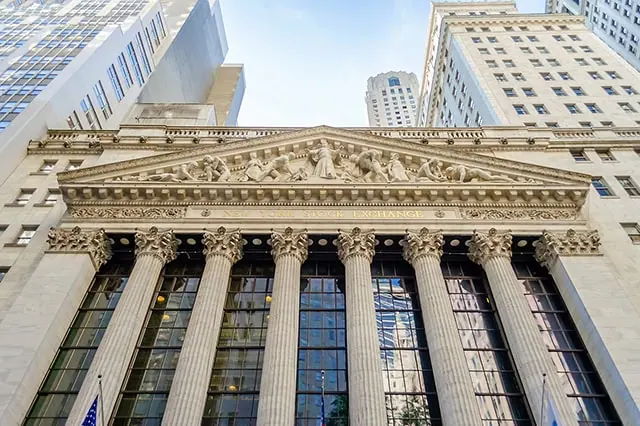
— Style: U.S. large-cap stock
— Management: Index
— Assets under management: $1.4 trillion
— Dividend yield: 1.2%
— Expense ratio: 0.04%, or 40¢ per year for every $1,000 invested
— Morningstar Portfolio Risk Score: 73 (Aggressive)
If we’re talking about tax consequences alone, a taxable account is much better positioned to take advantage of an index fund’s tax efficiency than a tax-advantaged account. Still, given that an IRA is often an investor’s primary (and sometimes only) investing account, and given that performance is the ultimate goal, an S&P 500 index fund absolutely belongs in any IRA.
Why? Well, the S&P 500 is hard to beat. Through mid-year 2024, “57% of all active large-cap U.S. equity funds underperformed the S&P 500,” says S&P Dow Jones Indices. That’s no anomaly: In 21 of the past 24 years, a majority of active fund managers that have tried to beat the S&P 500 have failed to do so.
Related: 10 Best Index Funds to Buy
If you can’t beat it, join it.
The Vanguard 500 Index Fund Admiral Shares (VFIAX), by virtue of tracking the S&P 500, holds shares of 500 large U.S. companies. But it doesn’t hold them equally. The S&P 500 is “market-cap weighted,” which means the larger the company, the more weight the stock has in the index (and thus the more impact it has on returns). Thus, right now, VFIAX dedicates the largest portions of its assets to companies like Apple (AAPL), Nvidia (NVDA), and Microsoft (MSFT), whose market caps are measured in trillions of dollars. It’s also considered to be a “blend” fund, which means it has relatively even exposure to value stocks and growth stocks.
Related: The 7 Best Fidelity Index Funds for Beginners
Turnover tends to be low, as only a handful of stocks enter or leave the index in any given year. So it typically makes little to no capital gains distributions. This makes VFIAX an extremely tax-efficient option for taxable accounts. But again, if you primarily invest through your IRA, and your goal is simply to maximize performance, VFIAX makes a lot of sense in your IRA. (Though it is worth noting that VFIAX’s ETF share class, VOO, has no investment minimum and costs 1 basis point less in fees.)
VFIAX is Vanguard’s oldest index strategy, and it remains one of the very best Vanguard retirement funds—for IRAs or wherever else you can stash it.
Related: The 7 Best Vanguard ETFs for 2024 [Build a Low-Cost Portfolio]
9. Vanguard Strategic Equity Fund Investor Shares

— Style: U.S. mid-cap stock
— Management: Active
— Assets under management: $9.5 billion
— Dividend yield: 1.1%
— Expense ratio: 0.17%, or $1.70 per year for every $1,000 invested
— Morningstar Portfolio Risk Score: 84 (Very aggressive)
Large-cap companies, like those in the S&P 500, have the potential for outsized growth. But smaller companies tend to be more explosive—for better or worse. They benefit from investing’s rule of large numbers (effectively, doubling your revenues from $1 million to $2 million is a lot easier than doing so from $1 billion to $2 billion). And when institutional investors become interested in these stocks, large influxes of new investment money can send their stocks skyward.
But they’re riskier. Smaller firms have fewer and narrow revenue streams, meaning if a core product line struggles, it can more easily lead to stock turbulence and losses. They also have less access to capital than larger companies, so if times get tight, it’s harder for them to survive.
Related:
Products like Vanguard Strategic Equity Fund Investor Shares (VSEQX) help defray that risk by allowing you to buy many smaller companies at once, so one stock’s failure doesn’t torpedo your portfolio’s worth.
Fund manager Cesar Orosco is tasked with buying mid- and small-cap stocks with above-average growth potential. He takes a quantitative approach, attempting to identify the most attractive stocks within an MSCI index of small- and midsized companies based on variables such as improving fundamentals and attractive valuation. He currently holds about 530 positions, split roughly 60/40 between small caps and mid-caps.
Related: 10 Best Dividend Stocks to Buy [Steady Eddies]
“Portfolio manager Cesar Orosco took the helm here in February 2021 and patiently but firmly reshaped the approach here to pursue its historical philosophy,” says Morningstar analyst Todd Trubey. “Stellar returns since Orosco’s arrival and since the AI model went live suggest a sharp turn from subpar returns when he landed. Its strong outperformance may not persist at this level forever, but this quant vehicle is built for gradual, all-weather outperformance and ongoing improvements.”
VSEQX does a fair bit of trading, with turnover of more than 60%. You can snuff out the tax liability of the resulting capital gains by stuffing this Vanguard fund into an IRA.
Like Young and the Invested’s content? Be sure to follow us.
Featured Financial Products
What is the Minimum Investment Amount on Vanguard Mutual Funds?

Vanguard funds are known for being shareholder-friendly. The Vanguard mutual fund company blazed new trails with the index fund, and Vanguard has done more than any other investment firm to keep costs to a minimum for investors.
But there is one hitch. Many of Vanguard’s cheapest funds in terms of fees have initial investment minimums of around $3,000.
If that is a problem for you, don’t sweat it. Most popular Vanguard index funds are also available as ETFs. Most brokers will allow you to buy as little as one share, and some even allow for fractional shares. And if you use a commission-free brokerage, you can buy those ETFs without incurring additional fees. ETF prices vary, of course, but many cost less than $100, and they rarely exceed $400 per share.
Also worth noting? If you invest in a 401(k) and any of these Vanguard funds are available to you there, consider investing in them that way. There is no minimum investment through a 401(k) plan—you just pick an allocation percentage, and when money is taken from your paycheck to contribute to your plan, whatever dollar amount that translates into will be invested into the fund.
Related: Best Vanguard Funds for an HSA
Why Does a Fund’s Expense Ratio Matter So Much?

Every dollar you pay in expenses is a dollar that comes directly out of your returns. So, it is absolutely in your best interests to keep your expense ratios to an absolute minimum.
The expense ratio is the percentage of your investment lost each year to management fees, trading expenses and other fund expenses. Because index funds are passively managed and don’t have large staffs of portfolio managers and analysts to pay, they tend to have some of the lowest expense ratios of all mutual funds.
This matters because every dollar not lost to expenses is a dollar that is available to grow and compound. And over an investing lifetime, even a half a percent can have a huge impact. If you invest just $1,000 in a fund generating 5% per year after fees, over a 30-year horizon, it will grow to $4,116. However, if you invested $1,000 in the same fund, but it had an additional 50 basis points in fees (so it only generated 4.5% per year in returns), it would grow to only $3,584 over the same period.
Like Young and the Invested’s content? Be sure to follow us.
Related: 13 Best Long-Term Stocks to Buy and Hold Forever

As even novice investors probably know, funds—whether they’re mutual funds or exchange-traded funds (ETFs)—are the simplest and easiest ways to invest in the stock market. But the best long-term stocks also offer many investors a way to stay “invested” intellectually—by following companies they believe in. They also provide investors with the potential for outperformance.
So if you’re looking for a starting point for your own portfolio, look no further. Check out our list of the best long-term stocks for buy-and-hold investors.
Related: 10 Best Monthly Dividend Stocks for Frequent, Regular Income
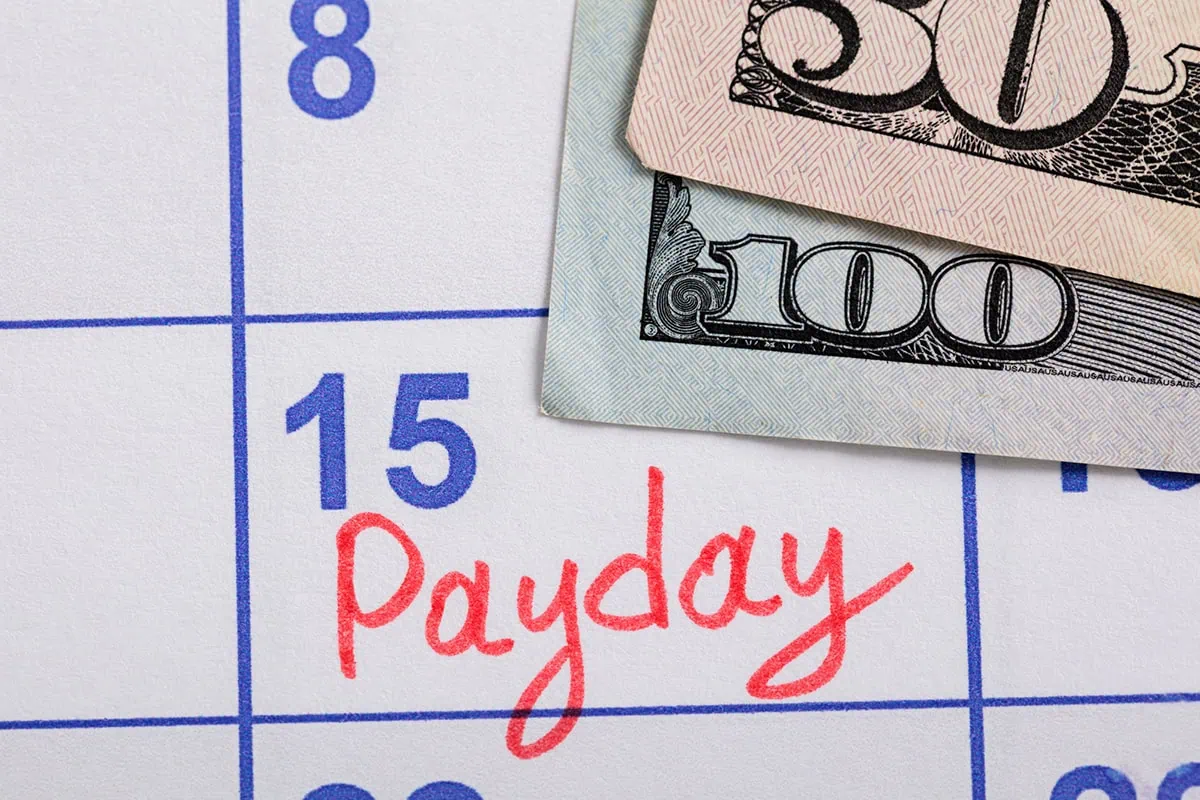
The vast majority of American dividend stocks pay regular, reliable payouts—and they do so at a more frequent clip (quarterly) than dividend stocks in most other countries (typically every six months or year).
Still, if you’ve ever thought to yourself, “it’d sure be nice to collect these dividends more often,” you don’t have to look far. While they’re not terribly common, American exchanges boast dozens of monthly dividend stocks.
Please Don’t Forget to Like, Follow and Comment
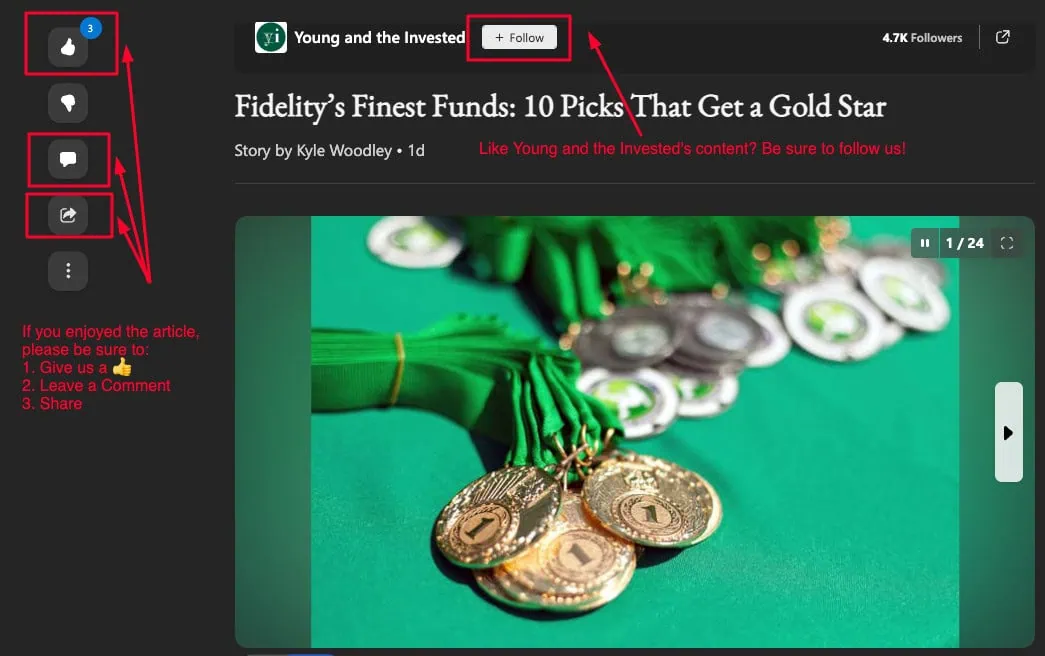
Did you find this article helpful? We’d love to hear your thoughts! Leave a comment with the box on the left-hand side of the screen and share your thoughts.
Also, do you want to stay up-to-date on our latest content?
1. Follow us by clicking the [+ Follow] button above,
2. Subscribe to Retire With Riley, our free weekly retirement planning newsletter, and
3. Give the article a Thumbs Up on the top-left side of the screen.
4. And lastly, if you think this information would benefit your friends and family, don’t hesitate to share it with them!






